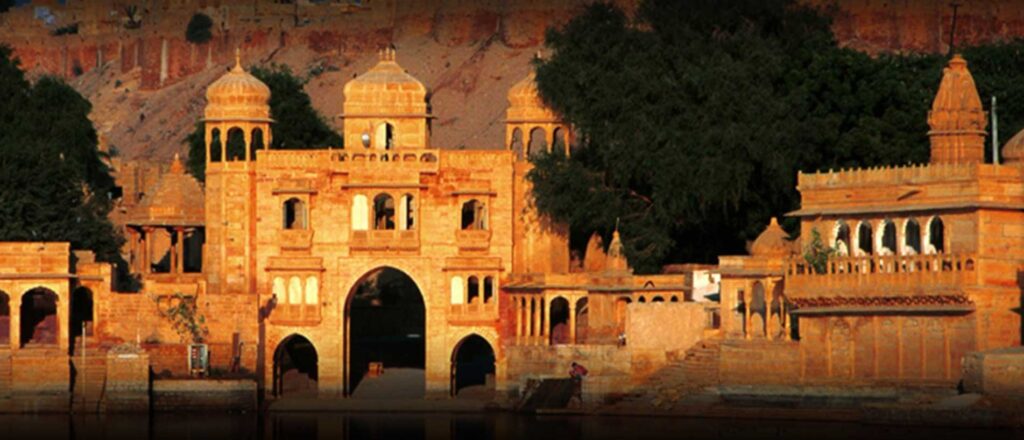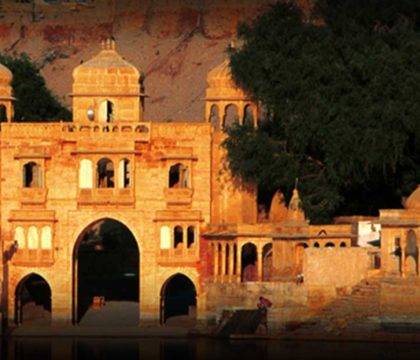The 51 Shakti Peethas are among the most sacred places in Hinduism, spread across India and neighboring countries, each sanctified by the presence of Goddess Sati. Among them, the Panchsagar Shakti Peeth, located in Varanasi, Uttar Pradesh, holds deep spiritual importance.
According to mythology, this is the spot where the lower teeth (adanth) of Goddess Sati fell when Lord Vishnu used his Sudarshan Chakra to dismember her body. With that divine incident, the land was charged with the presence of Maa Varahi (a form of Shakti), while Lord Shiva manifested here as Vigneshwar Bhairav, the eternal guardian.
Varanasi itself is the eternal city of Shiva, one of the oldest living cities in the world, and the presence of Panchsagar Shakti Peeth within its sacred boundaries adds a unique dimension to its spiritual aura.

Mythological Significance
The origin of Panchsagar Shakti Peeth is tied to the cosmic event of Sati’s sacrifice. After immolating herself in Daksha’s yagna, Sati’s body was carried by a grief-stricken Lord Shiva across the cosmos. To restore cosmic balance, Vishnu cut her body into pieces with his Sudarshan Chakra.
At Panchsagar in Varanasi, the lower teeth of Goddess Sati fell, making this location sacred. Here, she is worshiped as Maa Varahi, one of the Sapta Matrikas (seven divine mothers), representing strength, protection, and victory over evil forces. Her guardian deity is Vigneshwar Bhairav, ensuring the protection of the devotees who worship at this holy site.
This Shakti Peeth therefore represents the goddess’s fierce and protective aspect, reminding devotees of the indestructible power of the divine feminine.
Importance in Shakti Worship
The presence of Panchsagar Shakti Peeth in Varanasi, a city already considered Moksha-dham, enhances the spiritual status of both the site and the city. For Shakti upasakas (devotees of the goddess), Panchsagar is not just a temple but a place where they feel the direct presence of the goddess’s energy.
Unlike some other Shakti Peeths where the goddess is worshiped in gentle or motherly forms, at Panchsagar she is revered as Maa Varahi, who is associated with protection during wars, destruction of negativity, and the empowerment of devotees.
This makes the temple particularly significant for devotees seeking strength, courage, and the removal of obstacles in life.
Location and Accessibility
The Panchsagar Shakti Peeth is situated in Varanasi, Uttar Pradesh, one of the holiest pilgrimage destinations in Hinduism. Varanasi is also known as Kashi or Banaras, and the temple is located in the southern part of the city.
- By Air: The nearest airport is Lal Bahadur Shastri Airport (Varanasi Airport), about 25 km from the city.
- By Train: Varanasi Junction and Kashi Railway Station are the main railheads, connected to every corner of India.
- By Road: Varanasi is connected through NH19 and NH31. State buses and private vehicles frequently run from Lucknow, Allahabad, and Patna.
- Local Transport: Auto-rickshaws, cycle rickshaws, and e-rickshaws are convenient options for local travel.
The temple lies close to many ghats of the Ganga, allowing devotees to combine darshan of Maa Varahi with a holy dip at the ghats.
Architectural Style of the Temple
The Panchsagar Shakti Peeth temple does not boast large-scale grandeur but radiates a unique spiritual atmosphere. The temple architecture is typical of Varanasi shrines, modest yet filled with sacredness.
- The sanctum houses the idol of Maa Varahi, often depicted in her boar-headed form, signifying her fierce protective nature.
- The temple walls are carved with symbols of Shakti, yantras, and mantras.
- Lamps, incense, and bells fill the temple with a deep devotional aura.
- A smaller shrine of Vigneshwar Bhairav stands nearby, as no Shakti Peeth is considered complete without Bhairav’s worship.
The temple’s simple yet charged energy resonates strongly with pilgrims, making them feel connected to divine power instantly.
Rituals and Worship
The worship at Panchsagar Shakti Peeth follows the Shakta tradition. The rituals performed here include:
- Morning and Evening Aarti: Devotees gather to chant hymns and offer flowers and incense.
- Abhishek: The idol is bathed with water, milk, honey, and ghee.
- Offerings: Devotees bring coconuts, red cloth, sindoor, and sweets to offer to Maa Varahi.
- Special Puja: Navratri is celebrated with grandeur, and thousands of devotees visit during these nine days.
- Bhairav Puja: Worship of Vigneshwar Bhairav is mandatory after offering prayers to the goddess.
Devotees believe that prayers here remove fear, ensure victory in challenges, and protect against negative energies.
FAQs for Panchsagar Shakti Peeth
1. Why is Panchsagar Shakti Peeth famous?
It is one of the 51 Shakti Peethas, revered as the place where a part of Goddess Sati fell, making it a powerful spiritual site.
2. Where is Panchsagar Shakti Peeth located?
It is located in Varanasi, Uttar Pradesh, one of the holiest Hindu cities.
3. What is worshipped at Panchsagar Shakti Peeth?
The temple is dedicated to Goddess Shakti (as Maa Varahi or Vishalakshi, in some traditions), representing divine power and protection.
4. What are the temple timings?
The temple is generally open from 5:00 AM to 9:00 PM, with daily aarti rituals.
5. Is photography allowed inside Panchsagar Shakti Peeth?
Photography is usually restricted inside the sanctum, but may be allowed in temple premises.
6. What is the significance of Panchsagar Shakti Peeth?
It is believed that the lower teeth of Goddess Sati fell here, marking its spiritual importance.
7. How can I reach Panchsagar Shakti Peeth?
The temple is easily accessible via Varanasi city, with the nearest railway station Varanasi Junction and airport Lal Bahadur Shastri Airport.
8. Are there any special rituals at Panchsagar Shakti Peeth?
Yes, aarti, Navratri celebrations, and Durga Puja are performed with devotion.
9. Is there accommodation near Panchsagar Shakti Peeth?
Yes, Varanasi offers plenty of hotels, lodges, and dharamshalas for pilgrims.
10. What is the best time to visit Panchsagar Shakti Peeth?
October to March is best, with comfortable weather and festive celebrations like Navratri.


